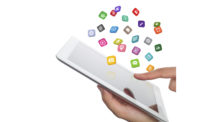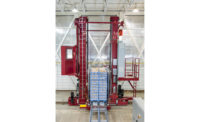How supply chain virtualization with IoT preserves quality, freshness in frozen foods
IoT enables the frozen foods being transported from the farm to the retail outlets to preserve their quality and freshness.

Many supermarkets, catering kitchens, distributors and more deal with various perishable products every day. Yet the fear of incurring losses due to the regulatory and malfunction issues have forced many of today’s food manufacturers to rely on technology, according to industry experts from Allied Market Research, Portland, Ore. In fact, researchers analyzing the size and share of the frozen foods market reveal that technology, such as Internet of Things (IoT) has finally stepped in to avoid such situations.
IoT helps prevent the downtime that often occurs with broken equipment and helps do away with food and energy wastage. Sounds like a clear win-win doesn’t it? Here’s how technology has contributed to the development of new retail products.
IoT to determine the future of frozen food market
There are many reasons why IoT has revolutionized the way the frozen food market has operated so far. The competitive business climate has virtually compelled every food processing company to consider an edge to expand into the marketplace and double their profits to meet customer demands. IoT works as a tailor-made solution for such environment. The technology has enabled processors to operate efficiently with analytics platforms to generate, analyze and communicate critical data.
IoT is also revolutionizing the techniques applied by consumer packaged goods to target, involve and even communicate with end users during day-to-day operations. Moreover, with the growing adaption rate of the connected devices, IoT technology is anticipated to harmonize the fast increasing volume of data that affects the different stages of operation, including product planning, manufacturing, marketing and more.
IoT helps in tracking the food products through a highly complicated supply chain. Yes, technologies such as RFID will soon assist several CPG brands to efficiently monitor and track the routes throughout the global supply chain.
Optimizing & controlling in real-time
Digital transformation and business re-engineering solutions have led to the discovery of end-to-end solutions especially for fresh produce frozen and packaged foods. One farm-to-fork solution, for example, helps in the transportation of produce and meat grown at different farms miles and miles away to be delivered as fresh as it was grown locally.
This solution combines machine data with company data to manage the supply chain structure, enhance visibility and help business owners make real-time decisions to ensure the perishable items preserve freshness during their journey from the farm to a retail outlet. Sensors, telematics and different telecommunication technologies help obtain data and send to business analytics servers. Such services enable notifications particularly on the threshold of violations.
These innovations also play a vital role in monitoring and tracking the vehicles in real-time. All of these ensure the end users have access to produce that is carefully monitored across the journey from the farm to the retail stores. So, whenever a quality deterioration is reported, it’s the audit data and traceability feature of the solution that does away with the re-occurrence of such situations in the near future.
Driving competition with automation
When a customer views empty shelves in a retail store, he/she is often left with an impression that the merchandise has already been picked. However, today the smart shelves powered by IoT can trigger functions such as re-stocking and re-ordering when the product runs out of stock. Product developers have also equipped these smart shelves with a facial recognition technology that collects important demographics, including age, gender, etc.
The companies operating in the consumer packaged goods segment have been long trying to understand the ever-changing preference and shopping patterns of potential buyers. With IoT technology, these companies can now make the most of the location-aware targeting feature. The technology helps these companies refine the buyers and target a retail outlet. The feature can also efficiently signal when certain buyers stop visiting an outlet, but also when they start shopping elsewhere. Moreover, sensors in the retail store can easily track the footfalls or shopping preferences to offer an extensive insight to the adaption rate and provide crucial data that helps business owners design effective ways to target and communicate with buyers and enhance brand identity and multiply sales.
Looking for a reprint of this article?
From high-res PDFs to custom plaques, order your copy today!





